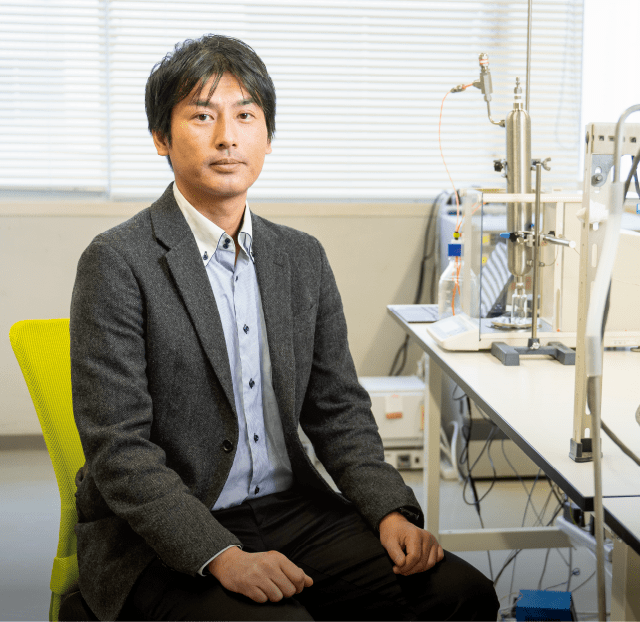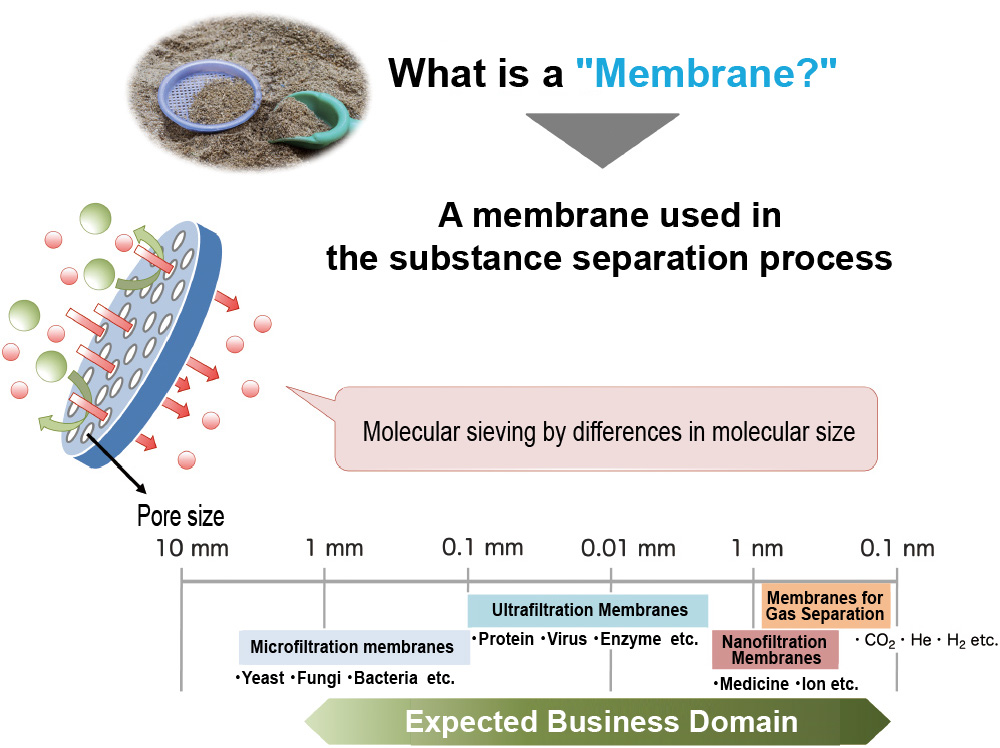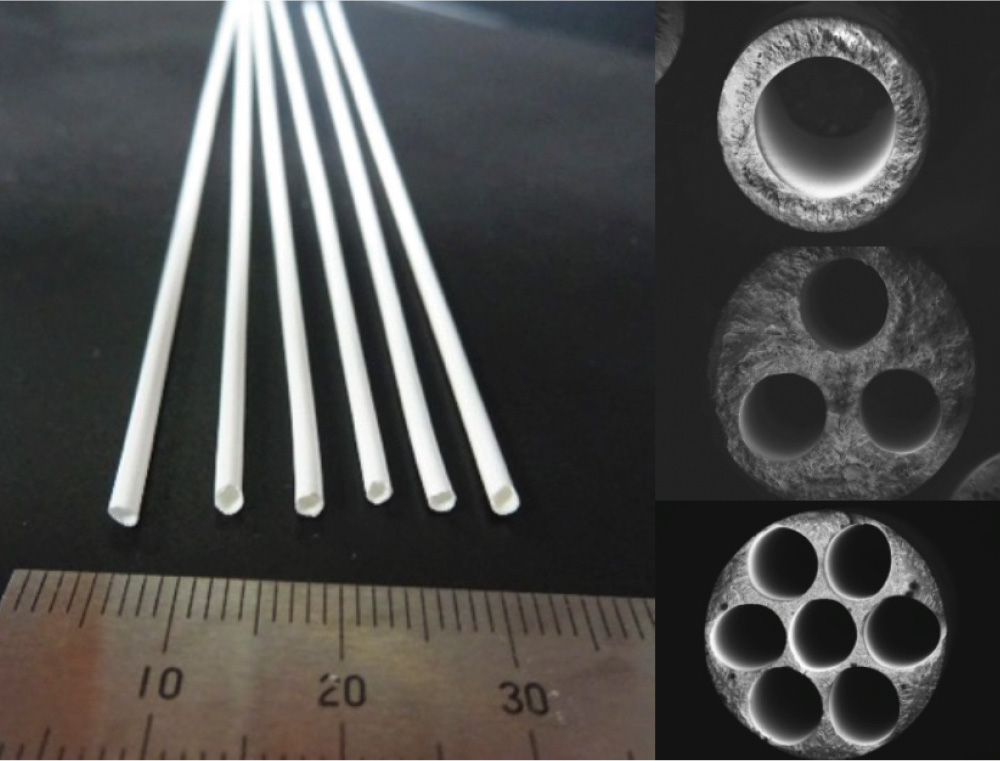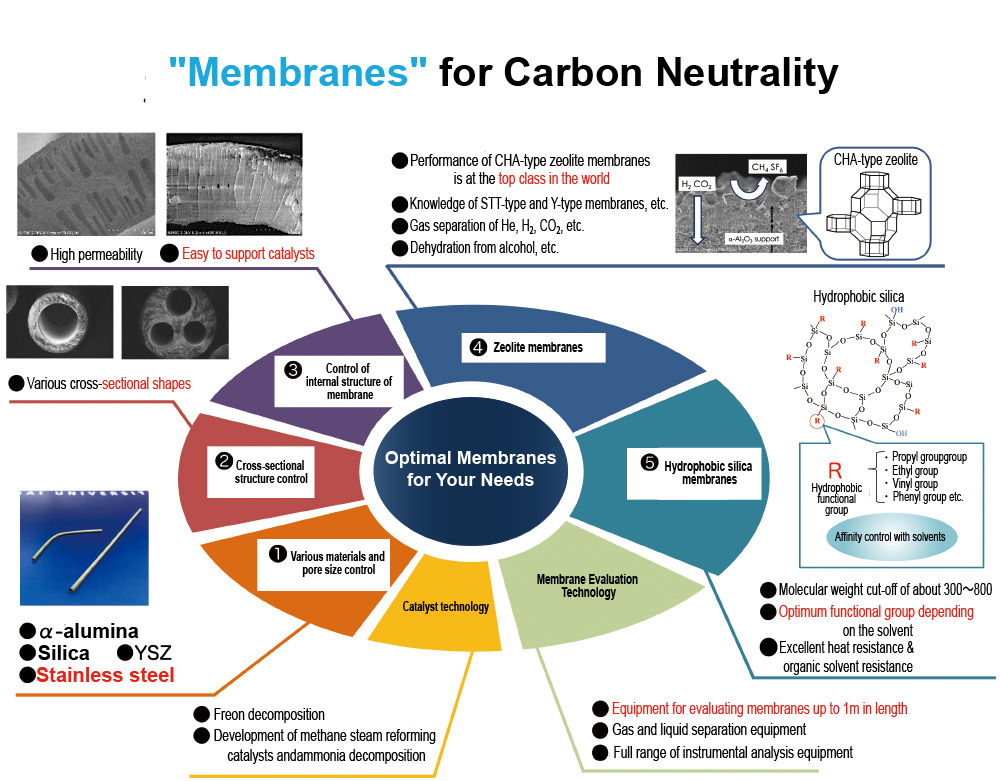Achieving Carbon Neutrality with Membrane
Separation using High Performance Inorganic
Membranes
Achieving Carbon Neutrality with Membrane
Separation using High Performance Inorganic
Membranes
Distillation and evaporation are used to manufacture chemical products, and these separation processes consume a large amount of energy, said to account for as much as 40% of the total energy consumption of the chemical industry. We are developing inorganic membranes with high performance and durability to replace these energy-intensive separation processes with more energy-efficient and environmentally friendly membrane separation processes. We are especially focusing our research on the separation of gases such as carbon dioxide and hydrogen and the separation of organic solvents.
- Affiliation:
- Kansai University
Faculty of Environmental and Urban Engineering
Department of Chemical, Energy and Environmental Engineering
- Representative:
- Sadao Araki

Associate Professor,
Kansai University
Faculty of Environmental and Urban Engineering
Department of Chemical,
Energy and Environmental Engineering
Sadao Araki PhD
In 2011, he became an Assistant Professor at the Faculty of Environmental and Urban Engineering, Kansai University, and in 2016, an Associate Professor. 2016, he was a Visiting Researcher at Imperial College London. His research interests include inorganic membranes for gas and liquid separation, and membrane reactor including reaction and separation processes at one unit using inorganic membranes.
SOCIALSocial Implementation
Our Technology Enables a Wide Variety of Highly Efficient Separations
Our membranes will make it possible to reuse organic solvents that have been disposed of and to efficiently separate expensive metal complexes. In gas separation, the membrane is expected to be applied to the separation of carbon dioxide or nitrogen from methane contained in biogas and natural gas. In order to put this technology into practical use, it is necessary to confirm that the expected performance will be achieved without problems using actual solutions and gases. We would like to work with companies that need this technology to foster its practical application.
ORIGINALITYUniqueness, Passion for Development
Developing High Performance Membranes by Precise Control of Pore Size
One of the unique features of our research is the addition of functional chemical species to the surface of the membrane. For example, we predict the best hydrophobic functional groups for permeation of organic solvents and introduce them to the surface of silica membranes. In zeolite membranes for gas separation, pore size can be precisely controlled by introducing chemical species as well. With these technologies, we have succeeded in developing membranes that show higher performance than existing separation membranes in many separation systems.
VISIONDream, Outlook, Business Image
Reduction of Environmental Impact and Realization of a Sustainable Society through Social Implementation
In the future, we intend to steadily improve the performance of our silica and zeolite membranes, as well as develop larger separation membranes, modularize them, and conduct tests on actual liquids and gases. In addition, we would like to explore new separation materials and separation systems of how our separation membranes can be used to separate substances that have not been considered for separation in the past. If implemented in society, this technology will undoubtedly make a significant contribution to the reduction of environmental impact and the realization of a sustainable society. We intend to continue research and development that will contribute to the advancement of membrane processes from various angles.




